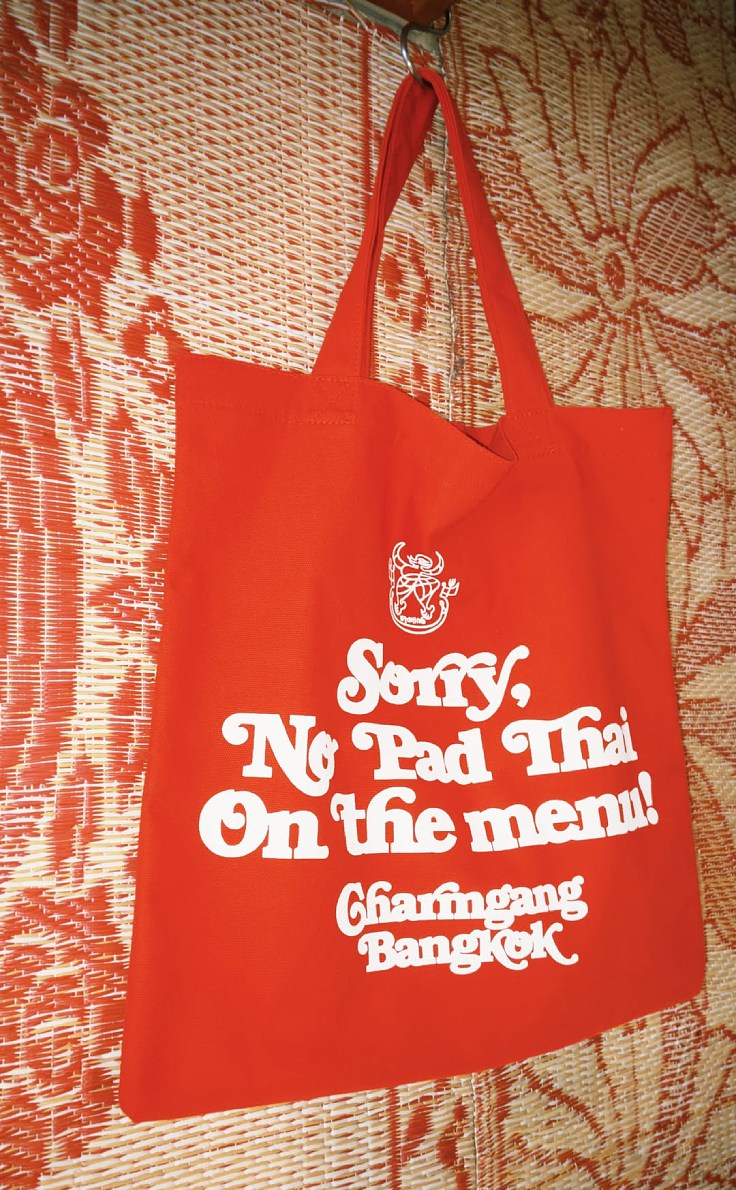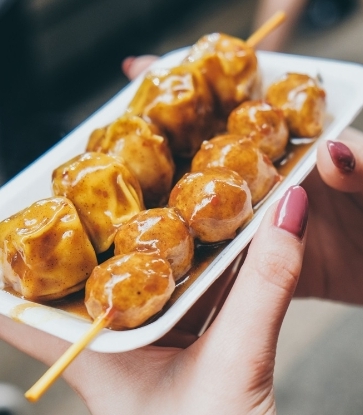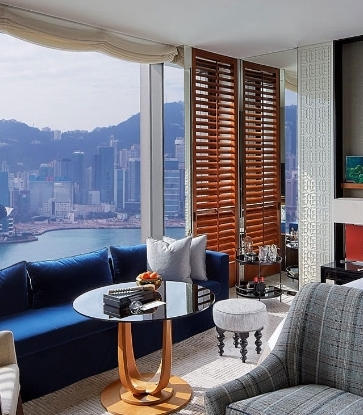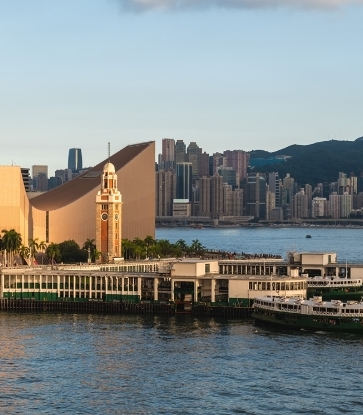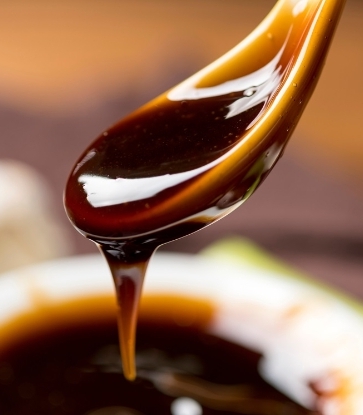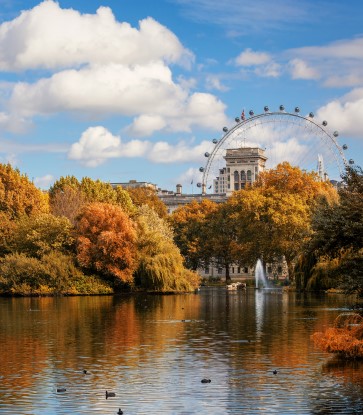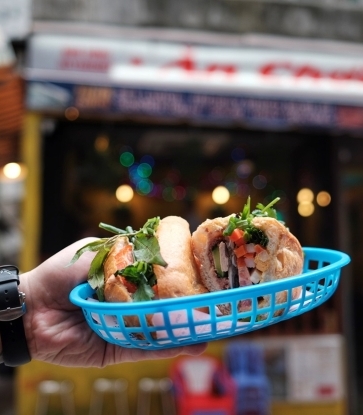The story of typhoon shelter crab dates back to the 1960s and 1970s, when Hong Kong’s typhoon shelters offered refuge to fishing boats during rough seas.
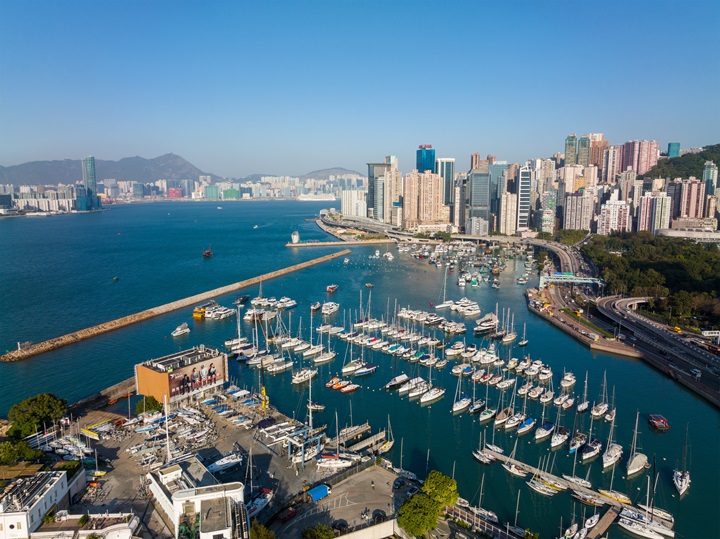
At the time, the Causeway Bay typhoon shelter was home to boat-dwelling fishing families. From this community emerged a distinctive “floating restaurant” culture. In the tight quarters of their galleys, cooks developed quick, high-heat stir-frying techniques and a taste for bold, robust flavors — methods that masked seafood’s brininess, satisfied the appetites of hardworking fishermen and made use of whatever unsold catch remained.
It was in these modest, gently rocking kitchens that typhoon shelter crab was born: freshly caught crabs tossed over fierce flames with generous amounts of garlic, black beans and dried chilies — creating an aroma so rich and flavor so intense it became impossible to forget.
As Hong Kong’s economy flourished and the city expanded, reclamation projects transformed Causeway Bay, and concerns over hygiene led the government to stop issuing licenses for boat-based eateries. Many fishing families — along with well-known floating restaurants — moved ashore, opening food stalls beneath the Canal Road Flyover in Causeway Bay and along Jaffe and Lockhart Roads in Wan Chai.
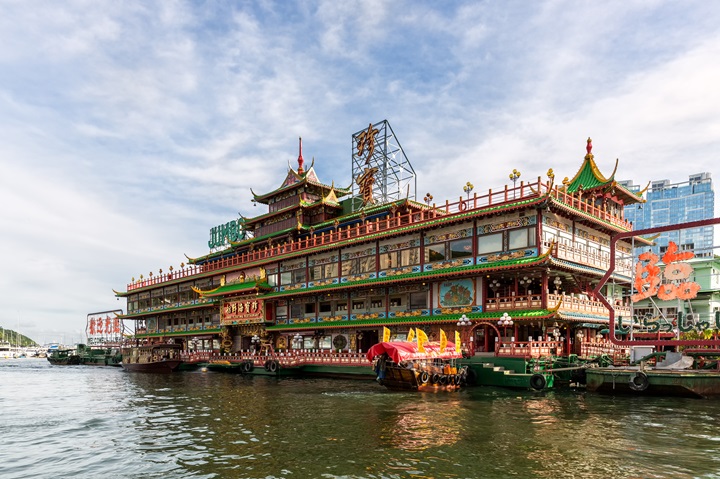
Typhoon shelter crab soon nicknamed “under-the-bridge spicy crab,” made its way onto land and quickly gained popularity in dai pai dongs (open-air food stalls) and traditional seafood restaurants. Floating establishments like the Tai Pak Seafood Restaurant and the Jumbo Floating Restaurant took the humble dish further, refining its flavor and presentation. Garlic was fried to a perfect golden crisp rather than deep brown, and more spices were introduced to create a deeper, more layered aroma.
Over time, typhoon shelter crab evolved from a rustic fishermen’s meal into a signature Hong Kong dish — one that celebrates the precision of wok cooking and the mastery of seasoning. By the 1990s, as tourism thrived, the dish had become one of Hong Kong’s culinary ambassadors: distinctive in flavor, dramatic in appearance and perfectly demonstrating local charm. Visitors came from around the world to savor its distinctive taste, and it soon became a symbol of Hong Kong’s rich food culture.
Further Reading: The Ultimate Guide to Aberdeen: Where to Eat, Explore, and Stay
“This dish tells the story of Hong Kong’s transformation from a humble fishing harbor to a world-class metropolis, serving as a gastronomic collective memory. For many locals, typhoon shelter crab is not just food, but a reminder of the city’s golden age — a time defined by grit, energy and ambition.”
Authentic typhoon shelter crab revolves around four key elements: freshness, aroma, spice and crunch. Ideally, the dish uses meaty, freshly caught crabs — usually mud crabs. Local catches are preferred, though increasingly rare, so many restaurants now source crabs from Vietnam or Australia. After cleaning and cutting, the crabs are fried at high heat until nearly cooked through.
The hallmark of a classic version is the “gold-and-silver garlic,” a mix of raw and fried garlic. Half is lightly fried to preserve its natural fragrance, while the other half is cooked until golden and crisp. This combination gives the dish a layered aroma and texture that’s instantly recognizable.
The garlic mixture is then stir-fried with black beans, dried chilies, breadcrumbs and scallions, before the crabs are tossed back into the wok over intense heat. The result is crab meat that’s tender inside, slightly crisp on the outside, infused with the fragrant garlic and spice — bold, satisfying and perfectly balanced. Many diners even savor the seasoned crust on the shell, leaving nothing behind.
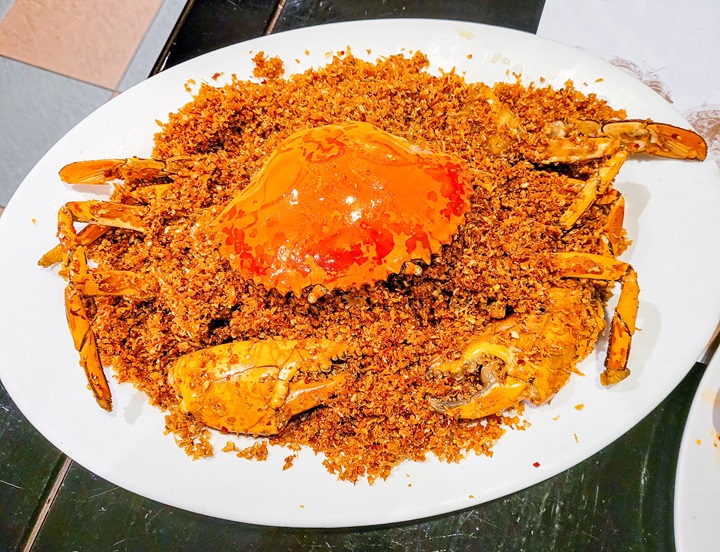
Beyond its punchy flavor, typhoon shelter crab carries deep cultural meaning. The sight of golden fried garlic blanketing bright red crab shells mirrors the city’s spirit — straightforward, practical and full of life. More importantly, this dish tells the story of Hong Kong’s transformation from a humble fishing harbor to a world-class metropolis, serving as a gastronomic collective memory. For many locals, typhoon shelter crab is not just food, but a reminder of the city’s golden age — a time defined by grit, energy and ambition.
As modern dining trends shift toward healthier options, some restaurants have introduced refined or “light” versions of the dish, reducing oil and salt while maintaining its signature aroma. High-end restaurants have also reimagined it with premium ingredients like Alaskan king crab, turning a once-humble creation into something elegant. Yet no matter how it evolves, the essence remains the same — the rich aroma of garlic, the sweet succulence of crab and the enduring Hong Kong spirit behind it.
To this day, typhoon shelter crab has journeyed from street stalls to fine-dining tables. For those seeking to experience this Hong Kong classic, here are a few standout MICHELIN-recommended spots to try:
Located near Tuen Mun’s Sam Shing Estate and founded in 1939, Dragon Inn is famous for its baked lobster with cheese — but its typhoon shelter crab, which blends traditional methods with modern touches, is equally noteworthy. Diners can even bring their own seafood to the kitchen to prepare. The garlic is fried to a golden crisp, making it perfect for those who prefer a milder spice.
Known for its signature under-the-bridge spicy crab, Tai Woo preserves the traditional fishermen’s style with a secret house blend. The crab is stir-fried with fresh chilies over high heat, delivering intense wok hei (smoky flavor imparted by a hot wok) and authentic Hong Kong flavor in every bite.
Further Reading: Beyond Bar and Clubs: Experience Hong Kong’s Late Night Like a Local
Set along the waterfront in Sai Kung, Chuen Kee Seafood (Hoi Pong Street) lets diners pick live crabs directly from the tank for typhoon shelter-style cooking. Prices fluctuate with the market, so it’s best to check before ordering.
A landmark name in typhoon shelter crab, Hing Kee has been around for three generations, staying true to its roots. Crabs are stir-fried with garlic, black beans, soy sauce and chili for a deeply aromatic result. Diners can adjust the spice level — a mild version is recommended to let the natural sweetness of the crab shine through.
Further Reading: MICHELIN-Recommended Dining Near Hong Kong’s Avenue of Stars
Here, the dish gets a luxurious upgrade with Alaskan king crab. The balance between spice and garlic is just right, with an unmistakable wok hei. Advance reservations are highly recommended.
If time allows, head to Hong Kong’s well-loved seafood districts — Sai Kung, Castle Peak Bay in Tuen Mun or Lau Fau Shan in Yuen Long. Whether sitting by the water or tucked inside a lively alleyway stall, nothing captures the city’s coastal spirit quite like a plate of freshly cooked typhoon shelter crab — a dish that embodies Hong Kong’s past and present, and the vibrant pulse of its food culture.
Further Reading: The Evolution of Cha Chaan Teng: Exploring Hong Kong’s Iconic Dishes and Local Dining Culture
Read the original Chinese article here.
Hero image: © Shutterstock





